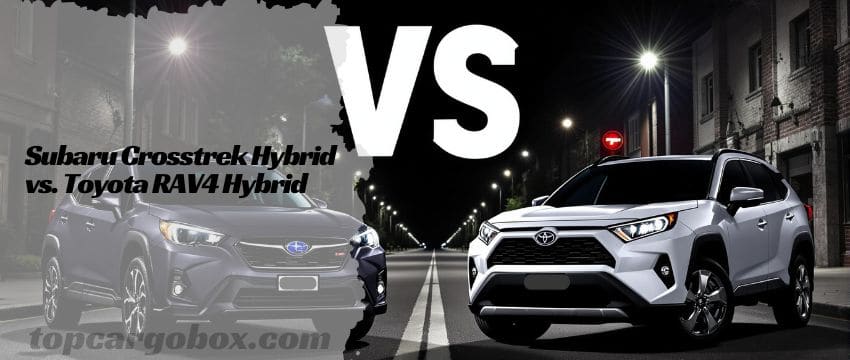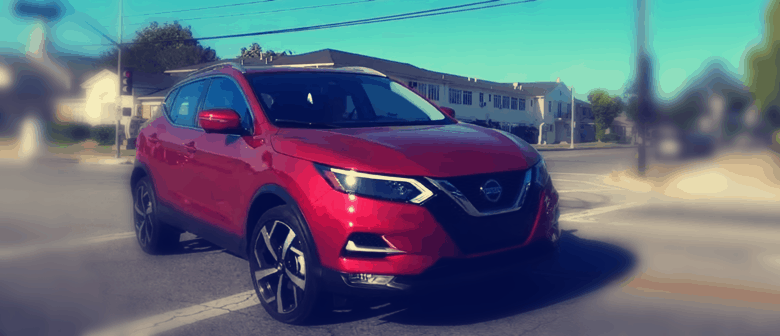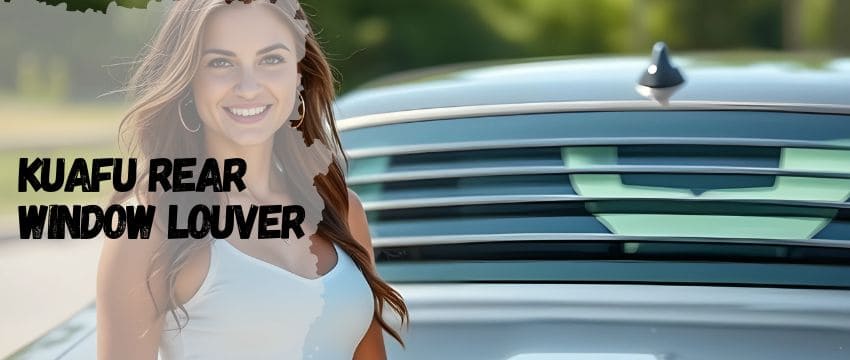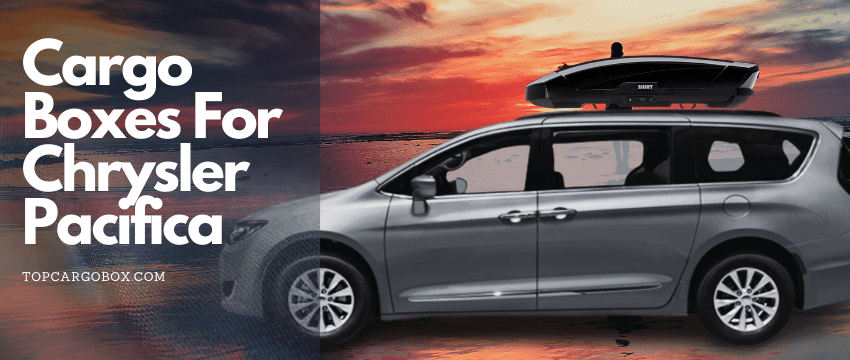How’s it going, adventure seeker? Stuck trying to decide between the eco-conscious charm of the Subaru Crosstrek Hybrid and the powerhouse popularity of the Toyota RAV4 Hybrid? Totally get it. Choosing your next ride, especially one meant for weekend escapes and daily commutes, feels like a big deal. Both promise fuel sipping and capability, but they hit very different notes. Let’s hang out and dive deep into these two hybrids, figuring out which one truly vibes with your lifestyle. Forget robotic specs for a sec; we’re talking real-life hauling, snowy roads, and that crucial “does it feel right?” factor.
First Impressions: Style & Stance
Subaru Crosstrek Hybrid: The Rugged Compact
What’s up with the Crosstrek Hybrid? It’s basically the outdoorsy cousin of the regular Crosstrek, rocking those signature Subaru cladding and a slightly raised stance. It shouts “weekend warrior” without being obnoxious. Think more Patagonia fleece than full climbing harness – ready for a spontaneous trailhead or navigating a muddy campsite access road, but still totally chill cruising downtown. The design is familiar, maybe even a bit old school compared to some rivals, but there’s a certain honest, functional appeal. You won’t mistake it for anything else on the road, which is kinda cool, right? It feels like a solid, dependable buddy for those “let’s just go” moments.
Toyota RAV4 Hybrid: The Bold Mainstreamer
Now, the RAV4 Hybrid? Dude, it makes a statement. Toyota went all-in with a bold, angular design that screams confidence. It’s noticeably larger and more imposing than the Crosstrek, looking like it means serious business. Think adventure-ready right off the showroom floor, maybe even bordering on aggressive with that big grille. This isn’t trying to be subtle; it’s announcing its presence. For some, that boldness is awesome, giving off serious “get stuff done” energy. For others, it might feel a bit much for just grabbing groceries. But hey, you definitely won’t blend into the background at the trailhead parking lot.
Quick-Pick List of Popular Car Accessories For Toyota RAV4 and Subaru Crosstrek:
Image | Items | Links |
|---|---|---|
 | TOPINSTALL Dash Console Tray for RAV4 (2019-2025 8″ Screen) This custom-fit dashboard tray adds hidden storage for tissues, sunglasses, or small essentials behind your 8-inch infotainment screen. Made of durable matte-black plastic with anti-slip padding, it installs securely with adhesive tape and looks like a factory upgrade (note: won’t fit 10.5″ displays). | |
 | MaserWeller MagSafe Phone Mount for RAV4 (2019-2025) Clip this vent-mounted holder onto your RAV4’s 7/8-inch screen bezel for a shake-free magnetic grip on MagSafe iPhones or phones with magnetic rings. Its 360° ball joint lets you position your phone perfectly without blocking vents or requiring permanent installation. | |
 | ARISMOTOR Custom Sun Shade for RAV4 (2019-2025) Block 99% of UV rays with this precision-cut foldable shade that snugly fits your RAV4’s windshield like a puzzle piece. The double-layer reflective fabric keeps your cabin cooler while the compact storage bag tucks neatly in your door pocket. | |
 | Husky Liners Weatherbeater Floor Mats (99661) Custom-molded for 2018–2023 Subaru Crosstrek and 2017–2023 Impreza, these 3-piece thermoplastic olefin (TPO) mats deliver edge-to-edge coverage with laser-scanned precision. Featuring StayPut Nibs for grip, a lifetime warranty, and easy-clean durability, they withstand heavy wear while remaining flexible and comfortable underfoot. | |
 | Fekey&JF Foldable Trash Can (Large) This 2.9-gallon waterproof storage bag uses upgraded Oxford fabric with a leakproof liner to organize trash, snacks, or gear in cars or outdoors. Its adjustable strap allows versatile hanging, while the collapsible design and dual size options (8.66″ or 10.82″ height) ensure space-saving portability and easy cleanup. | |
 | LANTU Tempered Glass Screen Protector (11.6″) Designed exclusively for 2024–2025 Crosstrek/WRX/Impreza infotainment screens, this 9H-hardness glass offers shatterproof scratch resistance and anti-fingerprint coating. Its 0.26mm thickness ensures bubble-free installation, 99% HD clarity, and seamless touch sensitivity without disrupting functionality. |
Under the Hood & On the Road: Performance Vibes
Subaru Crosstrek Hybrid: The City Slicker (with AWD Chops)
Let’s be real, the Crosstrek Hybrid’s powertrain is… unique. It pairs a 2.0-liter boxer engine with two electric motors – one driving the front wheels and one dedicated to the rear wheels for Subaru’s legendary Symmetrical All-Wheel Drive (AWD). Total system output? It’s around 148 horsepower. Okay, no big shocker here: that’s not exactly neck-snapping power. Around town, the electric motor provides a nice, quiet zip off the line. It feels peppy enough for urban commutes and merging onto highways, especially in EV mode. But ask it for serious grunt on a steep mountain pass fully loaded? You might be leaning into the accelerator and muttering “come on, little guy.” It’s competent, smooth, and the AWD system is always there, working silently. The ride is comfortable and controlled, soaking up bumps well. Handling is predictable, if not sporty. It’s a relaxed, easy-going drive.
Toyota RAV4 Hybrid: The Powerhouse Performer
Oh snap, the RAV4 Hybrid packs a legit punch! Toyota’s proven hybrid synergy drive combines a 2.5-liter four-cylinder engine with electric motors for a total system output of 219 horsepower (or a whopping 225 horsepower in the RAV4 Prime plug-in, but that’s a different beast). The difference is immediately noticeable. Acceleration is strong and confident, whether you’re merging onto a busy freeway or passing slower traffic on a two-lane highway. It feels genuinely quick for a hybrid SUV. Power delivery is smooth, seamlessly blending gas and electric. The ride is generally comfortable, though some find it slightly firmer than the Crosstrek, especially on rougher roads. Handling is secure and composed for its size. It delivers that satisfying feeling of having plenty in reserve when you need it. No sweat passing that slow camper van on the way to the lake.
Fuel Sipping Champ? MPG Face-Off
Subaru Crosstrek Hybrid: The Official Numbers
Alright, let’s talk gas mileage. Subaru officially rates the Crosstrek Hybrid at 35 MPG combined (35 city / 34 highway). That’s pretty solid, definitely better than the gas-only Crosstrek. In real-world mixed driving, hitting somewhere in the 32-36 MPG range is pretty common for most folks. It’s efficient, no doubt, especially considering the standard AWD system always working. But here’s the thing: achieving significantly higher numbers consistently? That takes serious hypermiling skills. The plug-in capability gives you that sweet, silent EV-only range (officially 17 miles), perfect for short errands or neighborhood drives. Charge it nightly, and your local trips could use zero gas. Awesome!
Toyota RAV4 Hybrid: The Efficiency King
The RAV4 Hybrid consistently sets the bar high. Official EPA ratings are an impressive 40 MPG combined (41 city / 38 highway) for FWD models, and a still-excellent 38 MPG combined (41 city / 37 highway) for the AWD versions. For real? 40 MPG in a capable SUV? That’s legit. Real-world drivers often report hitting 38-42 MPG without breaking a sweat, especially in milder climates and with sensible driving. Toyota’s hybrid system is incredibly refined and optimized for efficiency. While it doesn’t have a plug (except for the Prime), the sheer efficiency of its standard hybrid setup means you’ll be visiting the pump less often than the Crosstrek Hybrid on longer trips. The fuel tank is also larger (14.5 gallons vs. Crosstrek Hybrid’s ~13.7 gallons), meaning even longer range between fill-ups. Less gas station hassle? Yes, please.
Conquering the Elements: Off-Road & Snow Prowess
Subaru Crosstrek Hybrid: The Snow Goat
This is where Subaru’s DNA shines. The Crosstrek Hybrid features standard Symmetrical AWD, known for its predictability and sure-footedness. It sends power proactively to the wheels with the best grip. Add in 8.7 inches of ground clearance – that’s more than the standard RAV4 Hybrid! – and you’ve got a machine that laughs at deep snow, muddy forest service roads, and rutted trail access points. The lower center of gravity from the boxer engine also helps stability. Ever tried navigating an unplowed driveway after a surprise blizzard? The Crosstrek Hybrid makes it feel like no big deal. It inspires genuine confidence when the weather turns nasty. Plus, that clearance means you’re less likely to scrape on unexpected obstacles. Feeling under the weather about winter driving? This helps.
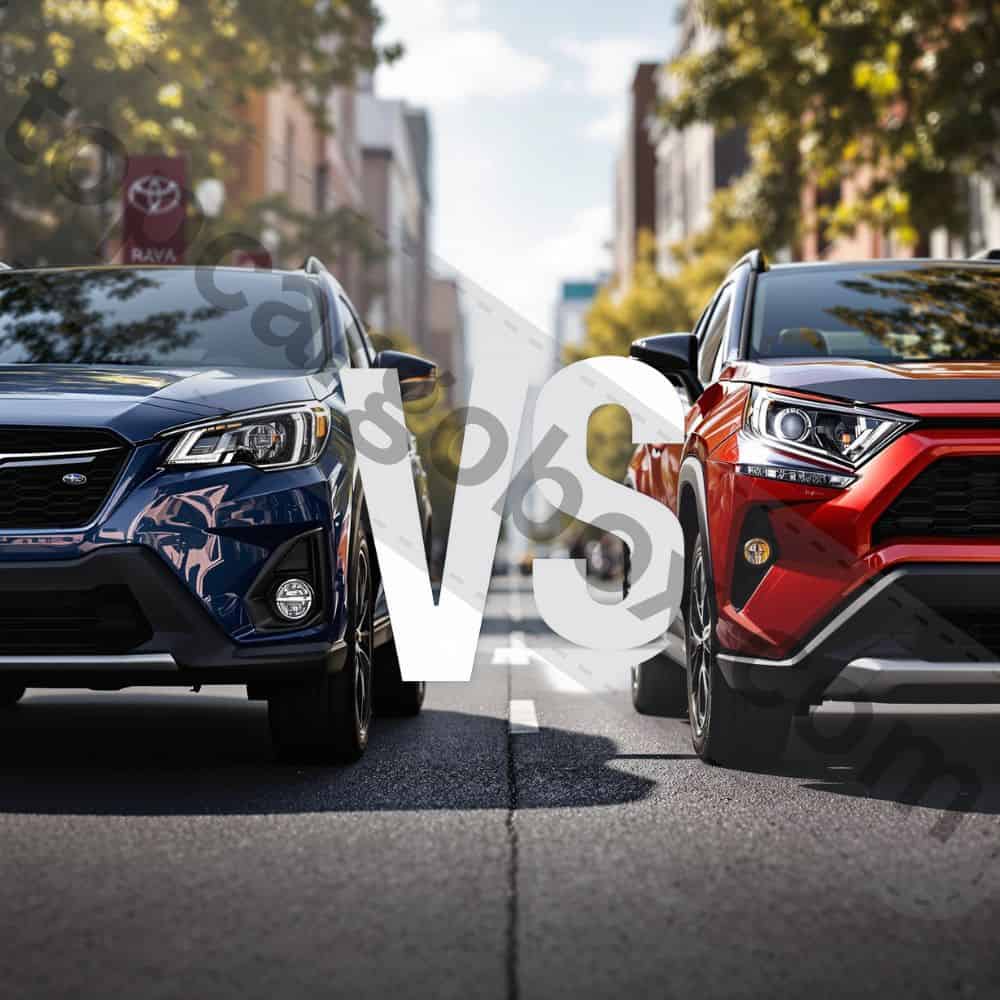
Toyota RAV4 Hybrid: Trail-Ready Options
The standard RAV4 Hybrid AWD system (called Dynamic Torque Vectoring AWD on some trims) is very capable for most situations, including snowy roads and light trails. It’s reactive and does a great job managing slip. But where the RAV4 Hybrid truly steps up is with the available RAV4 Hybrid Woodland Edition or the RAV4 TRD Off-Road (gas only, but shows the platform’s potential). These add features like all-terrain tires, upgraded suspension, and more rugged styling. The Adventure and TRD Off-Road trims (again, gas models) offer Multi-Terrain Select and a more advanced AWD system. For the standard Hybrid AWD, while excellent on snowy highways and dirt roads, it doesn’t quite match the Crosstrek Hybrid’s standard ground clearance or the innate feel of Symmetrical AWD in truly slippery, uneven conditions. Need serious off-road chops? You’ll want to look at those specialized trims.
Hauling Your Life: Interior Space & Cargo Savvy
Subaru Crosstrek Hybrid: Cozy & Clever
Alright, buckle up and let’s actually sit in the Crosstrek Hybrid. How’s it going? Sliding into the driver’s seat, you’ll find things feel pretty solid and well put together – no flimsy nonsense here. Sure, in the basic trim, the materials lean more towards tough and practical than super plush; think durable fabrics and hard plastics that can handle muddy boots or a wet dog, no big deal. Up front, the seats are generally comfy for most body types, good enough for your daily commute or a decent road trip stretch. But what about the back? Fair enough, it is a compact SUV, so taller friends or adults might find legroom just okay, not amazing. On a longer haul, folks back there might start thinking, “are we there yet?” a bit sooner than you’d like. Totally get it if that feels a bit snug.
Now, where this little rig gets clever is in the smart stuff. Popping open the hatch, you’ve got 19.9 cubic feet to play with right behind the seats – enough for groceries, gear bags, or the pup. Need way more space? Fold those rear seats down nearly flat (super easy, by the way), and boom, you unlock a much more generous 43.1 cubic feet. Loading bigger, awkward stuff? The flat floor is a lifesaver, making it straightforward to slide things in without the grunt work.
But hey, maybe you still need more room for that epic camping trip or hauling bikes? No sweat. Check out these awesome Subaru Crosstrek cargo roof box options for weatherproof storage up top, or grab some sturdy roof racks for Subaru Crosstrek to secure anything bulky. Biking this weekend? These 4 bike racks for your Subaru Crosstrek have you totally covered. It’s all about using the space you’ve got in the smartest ways possible, right? How do you feel about that kind of practicality? You get a real kick out of finding those clever solutions. Nice try thinking you couldn’t fit everything!
Toyota RAV4 Hybrid: The Roomy Workhorse
Alright, let’s crack open that RAV4 Hybrid door and see what hits you first. Whoa, the difference in space is seriously noticeable compared to smaller rides! You and your passengers – front and back – get way more room to stretch out. We’re talking significantly more legroom so you’re not cramped, extra headroom so tall folks don’t feel like they’re wearing the roof, and wider shoulder room meaning no elbow battles. Especially in the back seat, it just feels airier and less boxed-in. Plus, the materials used throughout the cabin? Generally solid across the different trim levels – nothing feels cheap or flimsy, which is nice when you’re living with it daily.
Now, pop that hatch and prepare to be impressed. The cargo area is a major win. You start with a generous 37.6 cubic feet right behind the rear seats – that’s legit room for several big suitcases or a hefty grocery run. But fold those seats down? Boom, you unlock a massive 69.8 cubic feet! Seriously, loading bulky stuff like that piece of furniture you scored, all your serious camping gear, or luggage for a whole family trip becomes way, way easier. No grunt work needed. Toyota didn’t stop there, either. Inside the cabin, you’ll find clever little storage spots everywhere: deep door pockets perfect for water bottles or umbrellas, a surprisingly roomy center console for your gadgets, and other nooks you’ll discover.
Need even more hauling power? Stuck hauling bikes or extra gear? Check out the best roof racks for Toyota RAV4 or a spacious RAV4 roof storage box or basket to maximize your overhead space. Wanna get crafty without breaking the bank? These DIY Toyota RAV4 camping hacks are genius for squeezing in comfort. Want to find every last inch? Discover those RAV4 hidden storage spots you might miss at first glance and dive deep with the ultimate RAV4 storage guide. How do you feel about packing this efficiently? This thing is a total packing powerhouse, making sure you can bring what you need without the stress. Nice try trying to run out of space!
Tech & Features: Staying Connected & Safe
Subaru Crosstrek Hybrid: Solid Fundamentals
Subaru’s STARLINK infotainment system features an 8.0-inch touchscreen (or 6.5-inch on base) and is generally straightforward. Apple CarPlay and Android Auto come standard, which is awesome. Physical climate controls are a plus for ease of use while driving. Where Subaru truly excels is safety. Every Crosstrek Hybrid comes loaded with EyeSight Driver Assist Technology: adaptive cruise control, lane centering, pre-collision braking, and lane departure warning. It’s comprehensive and works well. Available upgrades include a power moonroof, Harman Kardon audio, and navigation. It covers the essentials reliably without overwhelming you with flashy gimmicks. Feeling safer is never a bad thing.
Toyota RAV4 Hybrid: Feature-Rich & Refined
Alright, let’s dive into the tech Toyota packs into the RAV4 Hybrid. You’ll find they offer screens to suit your style, kicking things off with a solid 8.0-inch touchscreen as the base. Feeling fancy or just love a bigger view? Step up to the higher trims with the Premium Audio package, and you can score a seriously large 10.5-inch display that dominates the dash. How’s it going using these systems? Fair enough, the newer setups feel noticeably quicker and smoother than what you might find in some rivals, packing in more features without feeling clunky. Getting your phone connected is a breeze too – wireless Apple CarPlay and Android Auto are becoming pretty standard, meaning no more cable hassle just to jam to your tunes or navigate. Nice try getting lost when it’s that easy!
But wait, there’s more tech goodies you can add on, especially if you spring for the fancier trims. Imagine swapping out the old-school gauges for a slick, fully digital cluster right behind the wheel – totally changes the vibe. Ever wish your speed just floated in front of you? A head-up display can do that. Craving open skies? A panoramic moonroof floods the cabin with light. Sound quality your thing? Premium JBL audio pumps out the jams crisply. Practical comforts? Think ventilated front seats for a cooling breeze on hot days and even heated rear seats to keep everyone happy.
Parking stressing you out? A surround-view camera system gives you a bird’s-eye view, making tight spots no big deal. Safety’s covered too with Toyota Safety Sense 2.5+ (TSS 2.5+) standard on all trims. It matches the core safety assists you expect and tosses in extras like Road Sign Assist (no more missing speed limit signs!) and Lane Tracing Assist for smoother highway cruising. The whole tech package just feels more up-to-date and packed with options, especially when you go for the higher models. Binge-watching Netflix? Probably not your plan, but having all these features at your fingertips? How great is that for daily drives and road trips? You get a real kick out of the little conveniences. Legit useful stuff.
The Price Tag & Long Haul: Value & Reliability
Subaru Crosstrek Hybrid: Premium for Plug-In
Let’s talk dollars. The Crosstrek Hybrid starts at a significantly higher MSRP than the gas model or the base RAV4 Hybrid. You’re paying for that plug-in technology and the standard AWD system. Resale value is historically strong for Subarus, which helps offset the initial cost over time. Reliability for the hybrid system specifically hasn’t been tracked as long as Toyota’s juggernaut, but Subaru’s overall brand reliability is generally good. The warranty is standard: 3-year/36,000-mile bumper-to-bumper and 5-year/60,000-mile powertrain. Is the upfront cost worth the plug-in benefit and AWD for you?
Toyota RAV4 Hybrid: Value Leader & Reliability Rockstar
The RAV4 Hybrid starts lower than the Crosstrek Hybrid and offers significantly more interior space, more power, and better fuel economy (non-plug-in). It represents a strong overall value proposition. Then there’s Toyota’s legendary hybrid reliability. They’ve been perfecting this system for decades, and it shows in consistently top marks from Consumer Reports, J.D. Power, and others. Resale value is typically outstanding – often class-leading. The warranty mirrors Subaru’s (3/36 basic, 5/60 powertrain). You’re buying proven, long-term dependability. Less worry down the road? That’s priceless.
So, Which One’s Your Adventure Partner?
Phew! That was a deep dive. Choosing between the Subaru Crosstrek Hybrid and Toyota RAV4 Hybrid isn’t about finding the “best” objectively, but the best for you. It’s what fits your life, your priorities, and your adventures.

- Grab the Keys to the Subaru Crosstrek Hybrid if:
- You absolutely prioritize maximum traction in snow and slippery conditions right out of the box, no extra packages needed.
- You love the Crosstrek’s unique, rugged compact style and size – it’s easier to park in tight spots!
- You have a short commute or easy access to charging and want to maximize electric-only driving for local trips.
- You value Subaru’s standard safety suite (EyeSight) and overall solid build.
- You need decent cargo space but don’t regularly haul very large loads or multiple tall adults in the back.
- The Toyota RAV4 Hybrid is Calling Your Name if:
- Fuel efficiency is king, and you want the best non-plug-in hybrid MPG in the segment, especially for highway miles.
- You need significantly more passenger space (especially rear legroom) and a much larger cargo hold.
- You appreciate stronger acceleration and passing power for highway merging or mountain roads.
- You want access to more premium tech features and creature comforts (like ventilated seats, larger screens, digital dash).
- Proven, long-term hybrid reliability and top-notch resale value are major deciding factors for you.
The Bottom Line
Both are excellent hybrids with distinct personalities. The Crosstrek Hybrid is the ultimate compact snow-and-weather warrior with plug-in flexibility, perfect for urban adventurers who frequently face the elements and value maneuverability. The RAV4 Hybrid is the spacious, powerful, and hyper-efficient powerhouse, ideal for families, road-trippers, and anyone who prioritizes interior room and Toyota’s bulletproof hybrid tech. Take both for a serious test drive, imagine your typical week and your dream weekend getaway, and see which one just feels right. Happy trails!
Your Burning Questions Answered (FAQs)
Why is Subaru discontinuing Crosstrek hybrid?
Okay, this one stings a bit. Subaru discontinued the previous generation Crosstrek Hybrid (the plug-in version we’ve discussed) after the 2023 model year. Why? A few factors likely played a role. Sales volume was pretty low compared to the regular gas model and hybrids like the RAV4. Integrating the complex plug-in system into the Crosstrek’s compact platform was probably tricky and expensive. Plus, Subaru is pouring resources into developing their next-gen electric vehicles (like the Solterra) and more conventional hybrids across their lineup. They likely figured the niche plug-in Crosstrek wasn’t worth the ongoing investment when they need to focus on bigger electrification goals. Bummer for fans, but it makes business sense. No word yet if a new hybrid Crosstrek (non-plug-in) will emerge.
Does Crosstrek hybrid really get 90 mpg?
Hold the phone—did someone tell you the Crosstrek Hybrid pulls off 90 MPG? For real? That number’s floating around, but let’s get real: it’s not what you’d actually see pumping gas. That 90 is actually an MPGe rating, which stands for “Miles Per Gallon Equivalent.” It’s basically a way to measure how far an electric or plug-in can go on the same energy as a gallon of gas. So yeah, if you’re only running on battery power—no gas engine at all—you could technically hit that efficiency mark. But here’s the catch: that electric-only range maxes out around 17 miles. How many of your daily drives fit into that tiny window? Once that battery’s drained, buddy, you’re back in hybrid mode, and the official EPA rating plummets to 35 MPG combined. Feels like a bit of a letdown, doesn’t it?
What does this mean for your actual driving life? If your commute’s super short and you plug in religiously every night, sure, you might flirt with that 90 MPGe magic for quick grocery runs or school drop-offs. But drive farther than 17 miles? Road trip? Forget it—you’re looking at mid-30s MPG on gas, just like the sticker says. The car never actually gets 90 miles per gallon when burning fuel; that big number only applies when you’re strictly on electrons. So while it sounds awesome on paper, your real-world efficiency totally depends on how you use it. Bummer if you were hoping for miracle mileage on longer hauls, right? Nice try, Subaru marketing! How do you feel about that gap between the dream and the reality?
Is RAV4 or Crosstrek better in snow?
This is a classic matchup! Standard vs. Standard: The Subaru Crosstrek (gas or previous hybrid) generally has the edge in deep snow and slippery, unpredictable conditions thanks to its standard Symmetrical AWD system. It’s proactive, constantly adjusting torque, and combined with its 8.7 inches of ground clearance, it feels incredibly planted and confident. The standard RAV4 Hybrid AWD is very capable on snowy roads and handles most winter conditions well, but its system is more reactive. However! If you get a RAV4 with the more advanced Dynamic Torque Vectoring AWD (available on higher gas trims or standard on Hybrid XSE/XLE Premium) or especially the RAV4 Adventure/TRD Off-Road (gas) with Multi-Terrain Select, the gap closes significantly, and those RAV4s become formidable snow vehicles. For pure, effortless snow prowess right off the base trim, the Crosstrek often feels more intuitive.
What is the Toyota equivalent to the Subaru Crosstrek?
Looking at size, price, and rugged-ish vibes, the closest Toyota equivalent to the Subaru Crosstrek is actually the Toyota Corolla Cross. Think about it: both are compact crossovers positioned below their brands’ popular midsize options (RAV4 and Forester). Both offer standard AWD (though the systems differ), decent ground clearance for light adventures, and a focus on practicality and efficiency. The Corolla Cross is slightly larger inside than the Crosstrek but still smaller than the RAV4. Styling is less overtly rugged than the Crosstrek but more adventurous than, say, a HR-V. If you like the Crosstrek’s size class but want to stick with Toyota, the Corolla Cross is your go-to comparison, not the larger RAV4.
Which is better, the Subaru Crosstrek or the Toyota RAV4?
Ah, the million-dollar question! “Better” totally depends on what you need. Crosstrek (Gas or Hybrid Legacy): Better if you prioritize maximum standard snow/off-road traction (Symmetrical AWD), prefer a smaller, more maneuverable size for city driving/parking, love its unique rugged style, and find the price point appealing. RAV4 (Especially Hybrid): Better if you need significantly more passenger and cargo space, want the best fuel efficiency (hybrid), prefer stronger acceleration, desire more available tech/comfort features, prioritize Toyota’s legendary hybrid reliability and resale value, and don’t mind the larger footprint. Test drive both! The feel is very different.
Which car is more reliable Toyota or Subaru?
Overall, Toyota consistently ranks slightly higher in long-term reliability studies across major organizations like Consumer Reports and J.D. Power. They are often at the absolute top, especially for their hybrid systems which have decades of refinement. Toyota’s reputation for bulletproof engineering is well-earned. Subaru is generally considered a reliable brand too, often scoring above average. They build sturdy cars, especially their AWD systems and engines. However, they have occasionally faced specific model-year issues or recalls that temporarily dinged their scores. For pure, worry-free ownership over the very long haul (think 10+ years), Toyota, particularly their hybrids, usually has the edge in reliability rankings. But a well-maintained Subaru is also a very dependable vehicle.
Our team is creating outdoor-gear relevant articles with passion. If our articles can help you to find the correct solutions for your questions, we will be happy about that. In the content creation process, we usually collect accurate and useful information online or offline to compile our content in an organized way. Consequently, we can guarantee that you can discover some expected answers to your questions. We appreciate your time on our site.

